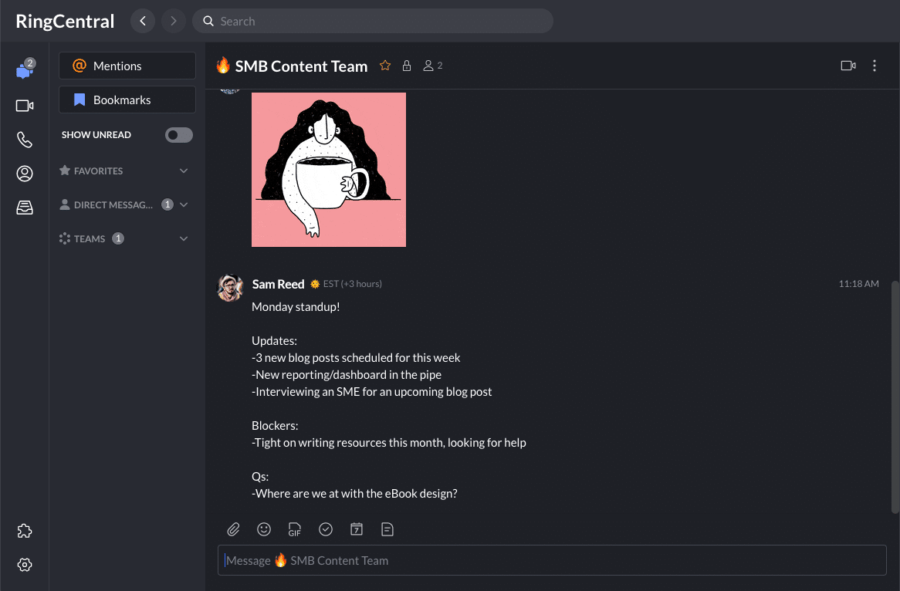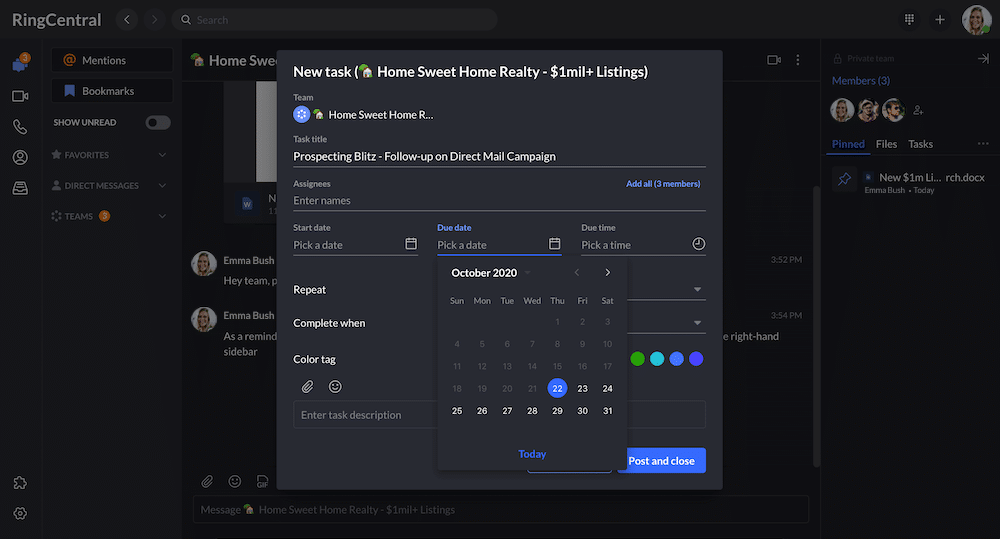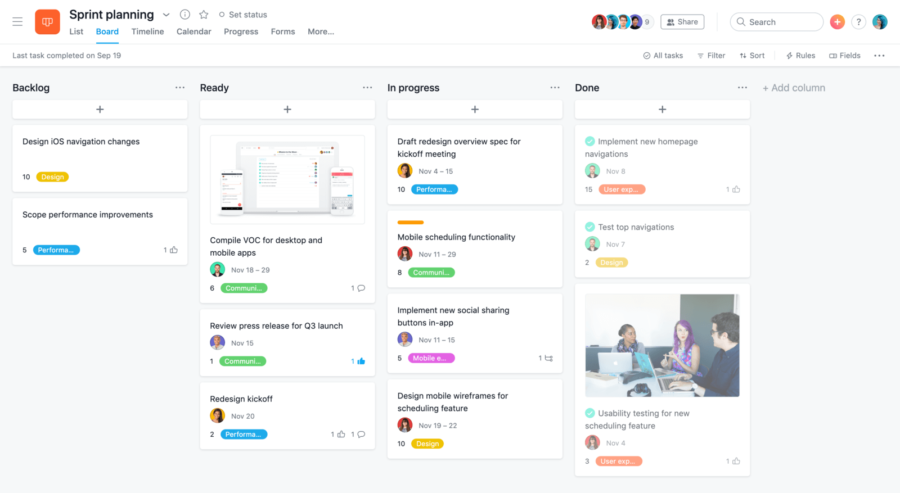In the ever-changing, turbulent world of modern business, flexibility is essential. Clients’ requirements and wishes are changing all the time, and woe betide any business that fails to keep up.
Needless to say, this poses particular problems for project development, as keeping the various stakeholders satisfied grows ever more challenging. This is one reason why so many businesses are turning to Agile forms of team organization.
You might have come across the term before, without understanding fully what it meant. In this guide, we’ll provide a concise overview of the Agile methodology and how you might apply it.
We’ll start by explaining what Agile teams are and the cross-functional way in which they’re organized. Particularly with regard to how this can enhance project management. Then, we’ll look into how you might build an Agile team of your own—including how big your team should be, and how its respective roles should be allocated.
And if you’re interested in becoming more agile as a team, we’ll also show you a few ways to do that, using unified communications solutions that’ll keep your team in sync and productive, even when working remotely.
Building a successful Agile team involves much more than just throwing a bunch of capable and talented individuals together (though of course, individual talents are important). It’s also about ensuring that your team truly understands the Agile ethos and buys into it, allowing for improved teamwork.
Need to manage a remote Agile team? Here’s a checklist that outlines vital daily, weekly, and quarterly team communication tasks for remote managers:
What is an Agile team?
An Agile team is a team commonly assigned to work on a particular project, often working in the same physical space, but sometimes separately (increasingly commonplace these days, with remote work on the rise).
The main point of working within an Agile framework is that it facilitates quicker adaptation and change. Teams approach projects in short bursts, known as sprints, and act on feedback—from testers or end users—after each sprint, instead of doing so once the whole project is complete. This is what’s known as an iterative approach.
The values that underpin Agile practices are derived from the Agile Manifesto—this was originally meant for software development, but there are plenty of great principles that can be applied to general work too! You may have also seen references to “Scrum” in relation to Agile development. This sometimes causes confusion.
The distinction between the two phrases, however, is fairly simple. Agile practices reflect a methodology or a philosophy, Scrum provides a framework for translating that philosophy into concrete working practices.

So, an Agile team using the Scrum framework would have a Scrum master (the project manager often assumes this role) and a product owner. The former takes responsibility for overseeing the project, including organizing daily standups (short team meetings) and facilitating collaboration. The latter, meanwhile, takes responsibility for ensuring that the final deliverables meet the expectations and needs of customers. Often, the workflow of various team members are managed via the Kanban method.
Traditionally, teams would gather in person for these quick standup meetings, but with distributed and hybrid work models becoming more popular, you might find it easier to adapt these in-person standups to a digital format. For instance, you could have a group chat where everyone can provide their updates asynchronously.
Here’s how that might look in RingCentral’s desktop app (which has not only team messaging but also video conferencing and phone calling!):

A key trait of Agile teams: They tend to be cross-functional
Between them, the individual team members are expected to have all of the necessary capacities and experience required for the project at hand. This allows them to be more self-organizing and also helps to facilitate continuous integration, along with a more fluid workflow.
This includes technical capabilities such as designing and testing, as well as business knowledge including decision-making and relevant domain knowledge.
However, the precise roles and responsibilities involved matter much less than the end results and overall functionality. The whole point of Agile processes is that individual team members can switch between roles as and when the needs of the project demand.
The cross-functional nature of the Agile approach helps team members to make full use of their talents, rather than confining them to a single, fairly narrow role.
Moreover, this cross-functional collaboration could benefit greatly from having good communication channels in place, from team messaging to video conferencing and voice calls. Agile teams may be dispersed around the world, and to work productively together they’ll need a communication platform that brings all these options together.
An all-in-one solution for business communications could, therefore, be the ideal choice for Agile teams working remotely. For instance, RingCentral’s app has multiple communication channels in one place:
How do I build an Agile team?
Once you’ve settled on a project that might be suitable for an Agile team, you then need to go about assembling and organizing that team.
When choosing team members, try to select people who you think will be amenable to the Agile approach. It’s an unorthodox methodology, which is why it requires people who generally have an open mind.
While selecting the right people and skill sets for your Agile team is vitally important, you also need to ensure that they have the right project management tools to hand. After all, even the most capable workman (or woman) will struggle to do the job if the tools they have are inadequate.
RingCentral can help bring remote teams closer together and make them more Agile. RingCentral Video is perfect for virtual daily standups, retrospectives, and backlog meetings.
With RingCentral Office, you can send instant messages (handy for quick catch-ups with individual colleagues) and make business phone calls, as well as organizing video conferences. It brings all your business communication needs together under one roof.
How big should agile teams be?
The optimal size of your Agile team will vary somewhat depending on the scale of the project it’s undertaking and the nature of the work involved. However, as a general rule, Agile teams should have between five and nine members.
The Scrum guide specifies that Scrum teams should be no smaller than three and no bigger than nine. This is because close collaboration is key to the Agile and Scrum approach.
However, some businesses may have Agile teams with more than 10 people in them. There is, perhaps, inevitably an element of trial and error involved. Each company has its own particular working culture and its own practices to consider as well.
What are the roles in an Agile team?
The Scrum model specifies four key roles: Scrum master, product owner, the project team, and stakeholders.
Remember the importance of iteration and improvement, too. At the end of each Sprint, you should have an end result that’s ready to be delivered to a client. This doesn’t mean that it has to be a fully fleshed-out and complete project, but it does need to produce a minimally viable product.
The precise tasks undertaken by members of an Agile team can vary enormously, however. There are no hard and fast rules about who should be doing what and when. But that’s the whole point.
Agile for basic project management
The Agile approach is being adopted more and more widely in customer service (e.g. in call centers), and for a plethora of smaller projects—not just in the software development process.
In fact, starting small can be the most effective way of experimenting with Agile processes. Some argue that Agile processes are best suited to smaller projects, but advanced and complex projects can also benefit from Agile techniques, as long as you’re applying them correctly.
Take a look at the different projects you’ve got in the works, and select one that could make a good testing ground for adopting an Agile approach. This will allow you to play around with the team structure and gather valuable insights that you can then subsequently apply to larger projects.
To start, you’ll need some kind of task management tool. You could purchase or sign up for a new one, but some communication platforms have this built right in to make things easier. For example, RingCentral’s desktop and mobile app has a feature that lets you create and assign tasks to yourself and teammates, set deadlines, and even color-code them to keep things organized.
These then get added straight to your group conversations so that everyone can see them:

🕹️ Get a hands-on look at how Agile teams can use RingCentral’s platform to not only communicate more effectively, but also keep better track of tasks. Book a product tour:
💰 You can also use this calculator to see roughly how much your business could save by using RingCentral to support your team’s communication with each other—and clients.
However, when choosing an initial project as a testing ground for Agile processes, avoid choosing the following:
- Projects that are already in progress
- Projects that will take longer than a month or two to complete
- Projects that are (or might become) particularly complex
- Projects that are of essential importance
Agile for advanced project management
It’s not just simple tasks that can benefit from Agile processes. The dynamism and quick-change nature of the approach can help with major projects, too.
Business-transformation IT projects, for instance, are notoriously difficult to manage. These projects involve complex requirements, with multiple systems involved, each requiring different skill sets. They also involve making changes to many systems simultaneously, which adds another layer of complexity.
Agile methodology and project management can help you rise to the challenge. By implementing sprints, followed by testing and related changes, you can ensure your project isn’t going off-track. No longer do you have to wait until project completion to learn that something went wrong. Neither do you have to look back over the entirety of your efforts to pinpoint where the problems arose.
With the right unified communication platforms and project management tools, the high-quality cooperation needed in even large, complex Agile teams is easy to achieve.
Asana is one popular workflow management tool. As you can see, it’s easy to see all the tasks in progress and what needs to be done for each Sprint:

Trello is another popular Kanban style board that also allows you to drag and drop tasks into your workflow:

What most of these management tools have in common is that they break down large projects into smaller bites-sized pieces that are much easier to manage. With so many moving parts, this is crucial to keeping teams Agile throughout the weeks and months it takes to complete a project.
Plus, team members will all be on the same page regarding tester or user feedback at the end of every sprint. They can also collaborate swiftly and effectively with RingCentral’s cloud phone system, team messaging tool, and other features.
Agile methodology, therefore, gives managers greater control over complex projects. They can stay across project progress more accurately, and also keep stakeholders informed. All using the same communications solutions that enable their Agile teams.
This makes it easier to estimate timelines and budgetary needs for complicated, large-scale projects. You don’t have to guess how long testing or debugging may take at the end of the process; you will have handled it throughout the project.
Agile innovation
After reading this overview of Agile techniques, you should have a good idea of how software development teams and those in a growing range of other sectors are putting them to use.
Remember, communication is key. Try to consolidate your different messaging and video conferencing tools into one platform, which will help reduce not only your monthly subscription costs, but also the amount of time your team has to spend managing software.
(RingCentral’s all-in-one solution is a great example of a tool that’s designed for business communications, making it easy to stay Agile—even when your team is working remotely.)
With a robust Agile framework and the right tools, your team should be able to adapt and flourish. There’ll doubtless be some snags along the way, but with persistence, the Agile approach can help lift your team to new heights of creativity.
Looking For Startup Consultants ?
Call Pursho @ 0731-6725516
Telegram Group One Must Follow :
For Startups: https://t.me/daily_business_reads




